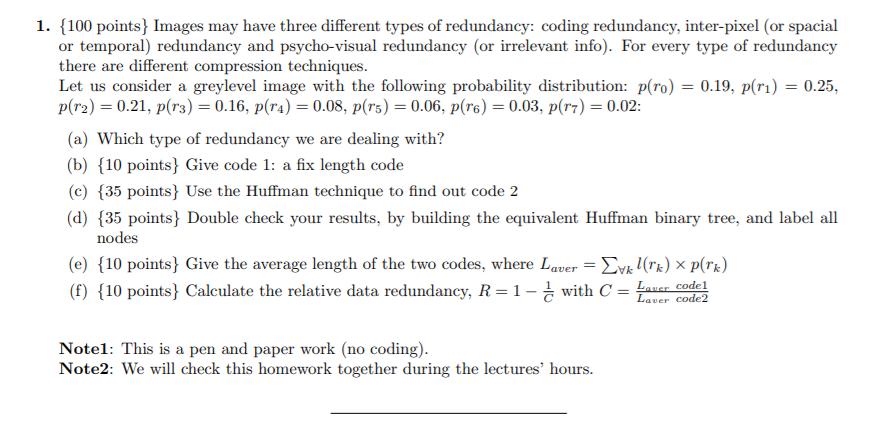Answered step by step
Verified Expert Solution
Question
1 Approved Answer
1. {100 points} Images may have three different types of redundancy: coding redundancy, inter-pixel (or spacial or temporal) redundancy and psycho-visual redundancy (or irrelevant

1. {100 points} Images may have three different types of redundancy: coding redundancy, inter-pixel (or spacial or temporal) redundancy and psycho-visual redundancy (or irrelevant info). For every type of redundancy there are different compression techniques. Let us consider a greylevel image with the following probability distribution: p(ro) = 0.19, p(r1) = 0.25, p(r2)=0.21, p(r3) = 0.16, p(r4) = 0.08, p(rs) = 0.06, p(r6) = 0.03, p(r7) = 0.02: (a) Which type of redundancy we are dealing with? (b) {10 points} Give code 1: a fix length code (c) {35 points} Use the Huffman technique to find out code 2 (d) {35 points} Double check your results, by building the equivalent Huffman binary tree, and label all nodes (e) {10 points} Give the average length of the two codes, where Laver =k (rk) xp(rk) (f) {10 points} Calculate the relative data redundancy, R = 1-with C = Laver code) Note1: This is a pen and paper work (no coding). Note2: We will check this homework together during the lectures' hours.
Step by Step Solution
There are 3 Steps involved in it
Step: 1

Get Instant Access to Expert-Tailored Solutions
See step-by-step solutions with expert insights and AI powered tools for academic success
Step: 2

Step: 3

Ace Your Homework with AI
Get the answers you need in no time with our AI-driven, step-by-step assistance
Get Started


